As summer winds down, many parents and children with ADHD feel anxious about the transition back to school. The shift from relaxed summer days to structured routines can be challenging, but with the right strategies, you can help your child start the school year with confidence and success. This guide from The Midtown Practice offers practical, evidence-based tips for parents on medication, routines, organization, and nutrition.
Restarting ADHD Medication After a Summer Break
Many families choose to give their child a “medication holiday” from ADHD stimulants during summer. As the school year approaches, parents often wonder how and when to restart medication for optimal results.
Key Questions About Restarting ADHD Medication
- Should my child restart at the previous dose?
- How long does it take to adjust to medication again?
- When should we resume daily dosing?
Expert Recommendations
If your child took medication most days over the summer: You can usually resume daily dosing at the start of the school year. Some children may feel the medication is stronger at first, but this typically fades within a few days.
If your child took a complete break or switched to short-acting medication: A gradual reintroduction is best. Start at the lowest dose and titrate up over 1–3 weeks, under your prescriber’s guidance.
Monitor for side effects: Watch for symptoms like shortness of breath, dizziness, rapid heartbeat, or blue lips. Seek medical attention if these occur.
Tip: Always consult your child’s prescriber before making changes to their medication routine.
Building Structure and Routines for Kids with ADHD
Children with ADHD thrive on predictability and routine. As school approaches, gradually reintroduce structure to help your child adjust.
Sleep and Wake Schedules
Start early: Begin moving bedtime earlier by 30 minutes every 5–7 days, several weeks before school starts.
Be consistent: Maintain a regular wake-up time, even on weekends.
Consult your provider before using melatonin: Not all children benefit from melatonin, and it may not be appropriate for every age or gender.
Reinstate School-Year Expectations
Chores and self-care: Resume expectations for chores, personal hygiene, and family routines.
Behavior charts: Use a star chart to reward positive behaviors like getting up on time, completing chores, or following family rules.
Family meals: Reinstate regular family dinners and other routines that mirror the school year.
Organization Strategies for School Success
A well-organized environment helps children with ADHD stay focused and reduces stress.
For Younger Children
- Designate a homework area: Keep all supplies in labeled bins or containers.
- Categorize materials: Group items by type (writing, reading, crafting) for easy access.
- Model and reinforce organization: Help your child put things away and praise their efforts.
For Teens
- Encourage independence: Let teens organize their own space, but offer guidance as needed.
- Limit distractions: Have your teen hand over their phone during homework and use website-blocking apps or the Pomodoro Technique for focused work.
- Try body doubling: Set up a workspace in a common area where your teen can work alongside others for accountability.
- Avoid homework in bed: Reserve the bed for sleep to support healthy sleep habits.
Nutrition Tips for Children with ADHD
Stimulant medications often suppress appetite, especially at lunchtime. Proper nutrition is essential for focus, mood, and growth.
Breakfast
- Prioritize protein and healthy fats: Include eggs, Greek yogurt, nut butter, or lean meats.
- Add whole grains: Serve oatmeal, whole wheat bread, or whole grain pancakes.
- Incorporate fruits and vegetables: Berries, citrus, and leafy greens are rich in brain-boosting nutrients.
- Include omega-3s: Foods like walnuts, salmon, and omega-3-fortified eggs support brain health.
Lunch
- Offer small, nutrient-dense options: Protein smoothies, bars, trail mix, or whole grain muffins are good choices.
- Allow flexibility: If your child isn’t hungry at lunch, let them eat a late lunch or hearty snack after school.
After School and Dinner
- Encourage a balanced meal: When appetite returns, provide a nutritious dinner with protein, whole grains, and vegetables.
- Consider omega-3 supplements: A daily supplement (500–1000mg, with a 3:1 EPA to DHA ratio) may help some children, but consult your provider first.
Involve Your Child in Back-to-School Planning
Empower your child by involving them in preparations:
- Workspace setup: Let them help organize their homework area.
- App selection: Work together to choose productivity apps or tools.
- Meal planning: Try new breakfast or lunch options together.
- Behavior charts: Collaborate on setting goals and rewards.
Giving your child agency builds confidence, independence, and a sense of ownership over their routines.
Frequently Asked Questions
Q: How soon before school should we restart ADHD medication?
A: Ideally, begin 1–2 weeks before school starts to allow time for adjustment and monitoring.
Q: What if my child resists returning to routines?
A: Start gradually, use positive reinforcement, and involve your child in planning to increase buy-in.
Q: Are there specific foods that help with ADHD symptoms?
A: A balanced diet with protein, whole grains, fruits, vegetables, and omega-3s supports brain health and focus.
Q: How can I help my teen stay organized?
A: Encourage independence, use digital tools, and set up a distraction-free workspace outside the bedroom.
Q: Should I use melatonin to help my child sleep?
A: Consult your pediatrician or psychiatric provider before starting melatonin, as it may not be suitable for all children.
Sources
- American Academy of Pediatrics. (2019). Clinical Practice Guideline for the Diagnosis, Evaluation, and Treatment of Attention-Deficit/Hyperactivity Disorder in Children and Adolescents. Pediatrics, 144(4), e20192528.
- Cortese, S., et al. (2018). Comparative efficacy and tolerability of medications for attention-deficit hyperactivity disorder in children, adolescents, and adults: a systematic review and network meta-analysis. The Lancet Psychiatry, 5(9), 727-738.
- Shaw, P., et al. (2014). Psychostimulant treatment and the developing cortex in attention deficit hyperactivity disorder. American Journal of Psychiatry, 171(1), 58-65.
- Molina, B. S., et al. (2013). The MTA at 8 years: prospective follow-up of children treated for combined-type ADHD in a multisite study. Journal of the American Academy of Child & Adolescent Psychiatry, 52(7), 696-705.
- Faraone, S. V., & Buitelaar, J. (2010). Comparing the efficacy of stimulants for ADHD in children and adolescents using meta-analysis. European Child & Adolescent Psychiatry, 19(4), 353-364.
Need help preparing your child with ADHD for the school year?
Contact The Midtown Practice at 212.286.8801 or info@midtownpractice.com to schedule a consultation with our experienced child psychiatrists and therapists. We’re here to support your family every step of the way.



